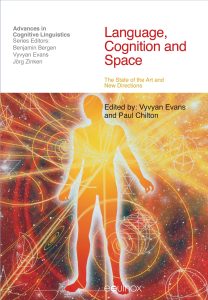
Edited by: Vyvyan Evans and Paul Chilton
Spatial perception and cognition is fundamental to human abilities to navigate through space, identify and locate objects, and track entities in motion. Moreover, research findings in the last couple of decades reveal that many of the mechanisms humans employ to achieve this are largely innate, providing abilities to store ‘cognitive maps’ for locating themselves and others, locations, directions and routes. In this humans are like many other species. However, unlike other species, humans can employ language in order to represent space. The human linguistic ability combined with the human ability for spatial representation apparently results in rich, creative and sometimes surprising extensions of representations for three-dimensional physical space. The present volume brings together 19 articles from leading scholars who investigate the relationship between spatial cognition and spatial language. The volume is fully representative of the state-of-the-art in terms of language and space research, and points to new directions in terms of findings, theory, and practice.
Download
http://usafiles.net/148N/Language_Cognition_and_Space__The_State_of_the_Art_and_New_Directions.pdf